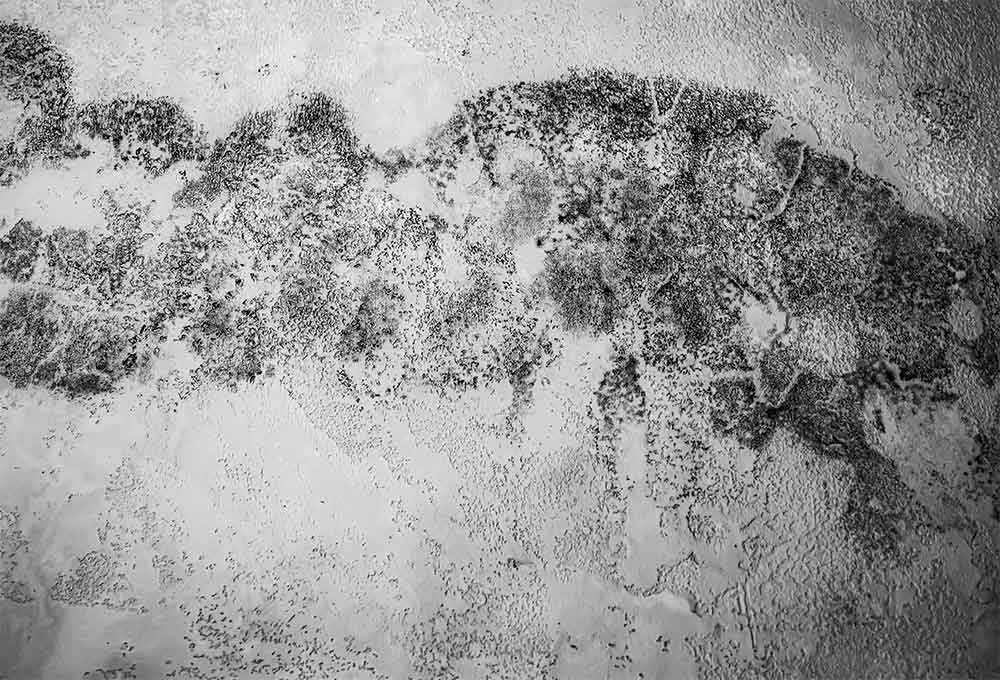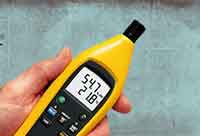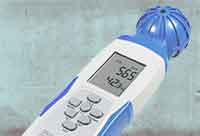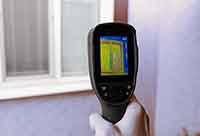
On dealing with mould removal, we first must identify the health risks to both you and to us.
Our initial appointment would therefore be to ascertain the health risks and, in certain cases, produce a risk assessment and method statement in accordance with COSSH (Control Of Substances Hazardous to Health).
To understand how badly affected the mould is within your home and why it has occurred, It is important that we take into account the air quality, surface humidity and temperature and other environmental issues. We take readings of the air quality, the relative humidity, and thermal images of the room, looking at surface temperature areas; this is all completed before we approach removing mould. Our reason for taking readings are as follows:

Humidity Meter
Our aim is to reduce the relative humidity (RH) in the room as mould requires moisture and cannot grow in conditions where the RH is more than 60% - ideally, we would endeavour to reach a target of less than 50% RH which kills mould. The use of dehumidifiers maybe required to reach that target.

Air Quality Meter
Taking air quality readings gives an indication of how many mould spores are in the air that you breathe. If the readings are above a certain level, we would suggest using an air purifier (also known as an air scrubber) as the lower the mould spores, the less of a health risk.

Thermal Camera
The use of a thermal imaging camera can detect cold and hot spots within your home to evaluate the reason as to why mould is occurring. In some instances, it is simply poor ventilation, however damp within the walls is an indication of either an external water leak or rising damp.

Moisture Meters
We would carefully measure the moisture within the walls and/or ceilings and also the wooden fixings such as skirting boards and door frames. For this, we use state of the art sensitive moisture metres, to detect the humidity within the construction.